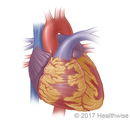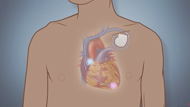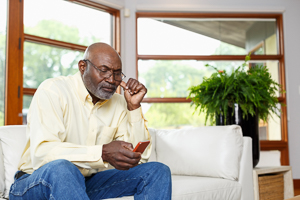John M. Miller MD FACC
What is bradycardia? Having bradycardia (say “bray-dee-KAR-dee-uh”) means that your...
There are several types of slow heart rates ( bradycardias...
What is a cardiac device? Cardiac devices include pacemakers and...
Antiarrhythmic medicines may be used to return an irregular heartbeat...
In cardiac arrest, the heart suddenly stops beating. This causes...
Discusses how to live with an implantable cardioverter-defibrillator (ICD), a...
Describes early heartbeats that happen when the ventricles beat too...
Topic guides reader through decision to get a pacemaker for...
Topic guides reader through decision to get an ICD for...
Explains what a recall of a medical device is. Mentions...
Showing 1-10 of 129 results






